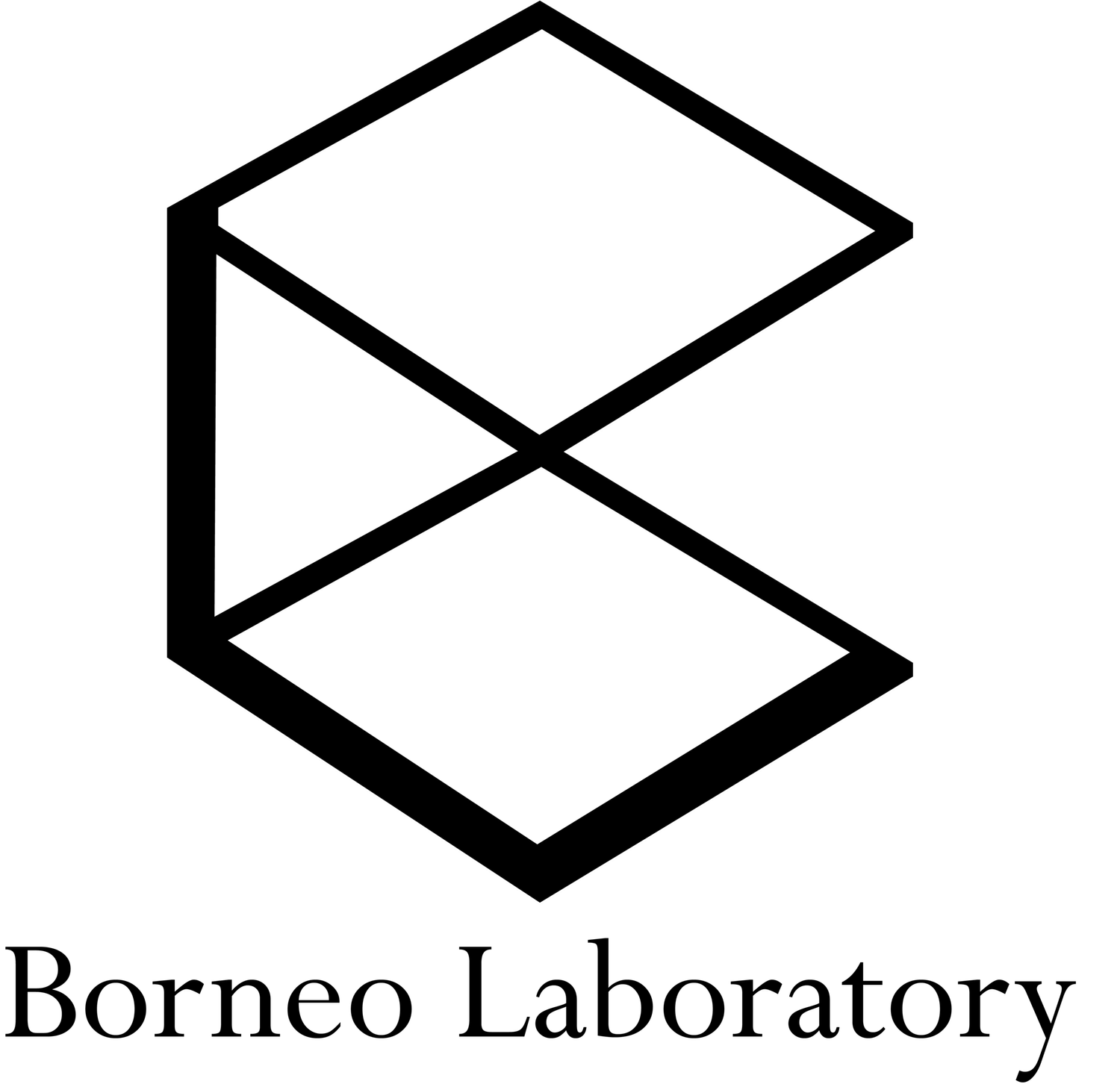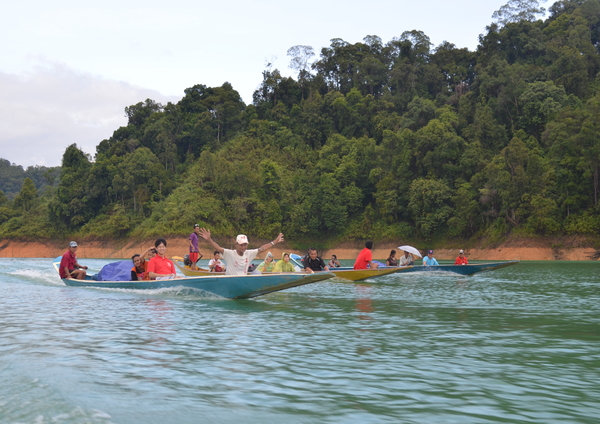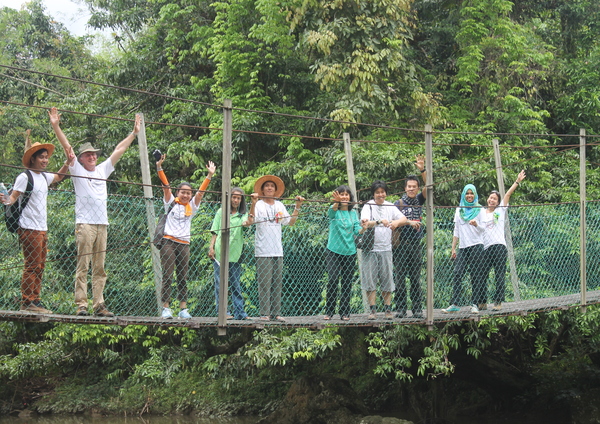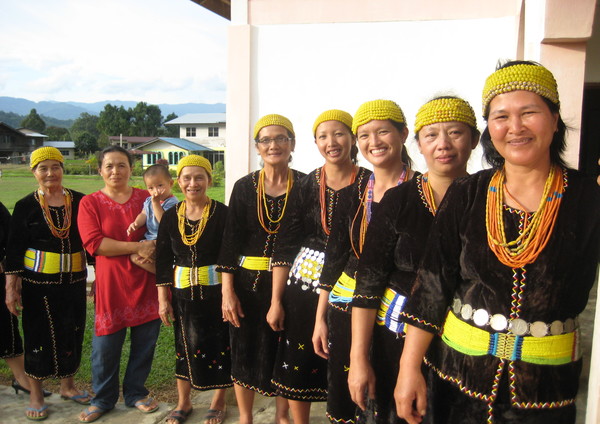Barefoot Mercy
A group with a powerful mission, Barefoot Mercy sets out to address the core social issues in Sarawak.
Although their projects are not directly related to Borneo Art, there would clearly be no art nor culture if not for the unique people who create it, and it is in this respect that Barefoot Mercy's work in aiding and improving the livelihood of Borneo communities is of huge fundamental importance, which is why we are proud to feature them.
Q&A Interview with Barefoot Mercy
Website: www.barefootmercy.org
Facebook: Barefoot Mercy
Instagram: barefootmercy
B: Borneo Art Collective BFM: Barefoot Mercy
B: Could you describe your group?
BFM: We are a 8-person Sarawak-based organization working to address the growing urban-rural divide in living standards in the state.
The word Barefoot embodies the spirit of what we are trying to do, addressing basic needs with simple, implementable but effective solutions. Incidentally, one of our very first initiative was the distribution of water tanks - when we received photos of the first recipients, we noticed that they were all barefoot, as such the name also gives a nod to the very basic living conditions of some of the communities we are seeking to assist.
5 members from BFM team together with friends at their benefit event 2015 Xmas Market
B: Could you describe the projects you've undertaken?
BFM: Many rural communities continue to lack access to basic amenities such as electricity, clean water, health and education facilities, transportation and telecommunications. Specifically, we focus on:
1) Rural Electrification – we provide electricity via the installation of micro-hydro systems in community-based projects (in 9 communities to date). Where micro-hydro is not possible, we consider the provision of solar solutions.
Micro-hydro systems harness the power of streams or small rivers with significant vertical drop to generate electricity, enabling communities to enjoy lights and other basic amenities, such as food refrigeration, and providing the possibility of establishing certain cottage industries.
There are nine completed micro-hydro projects under the ‘Gift of Light’ initiative, providing light to 213 homes and a 25 door longhouse in Long Kerabangan, Long Tanid, Nanga Talong Engkari, Pa’Brunut, Puneng Trusan, Long Lidung, Long Beluyu, Long Resina and Long Remirang.
In the event that communities do not have a suitable water source to justify a micro-hydro system, they consider providing solar supplements. Barefoot Mercy has to date provided 130 solar lanterns to two communities, Long Lamam and Long Ajeng, and 3 solar home systems to Tadika Pawah, the pre-school at Long Lamam.
2) Education Support – we support a focus rural pre-school (run by another Sarawak-based organization, PPP Orang Pribumi) via a student sponsorship scheme. We are also assisting with the build of a new building for the pre-school.
Under the ongoing ‘Gift of Hope’ initiative, Barefoot Mercy assists in the building of a new pre-school building and have initiated a child sponsorship scheme to cover the operational expenses of a child (meals, uniforms, books and stationery) in the pre-school.
3) Economic Growth – we look at supporting the rural communities we work with, by bringing their produce and wares to market, including their crafts. The remoteness of these communities and the infrastructure gap, mainly transportation links, are usually barriers to their participation in a cash economy. We have also held a vocational skills workshop teaching ladies in a rural community how to utilize their pineapple harvest.
Vocational Training held in July 2015 in the pineapple-producing village of Puneng Trusan (recipient of a micro-hydro system). The volunteer trainer conducted sessions to facilitate the conversion of their bountiful pineapple harvest into less perishable products, therefore minimising waste of good fruits and providing ideas for cottage industries.
Social Enterprise – An issue facing many rural communities is the inability to get their produce to market, due to poor connectivity to marketplaces. Where possible, they assist communities by buying their produce and wares at a fair price with profits from sale in urban centres ploughed back into their funds.
Mountain Spring Salt (Bakelalan) and Rattan Baskets (Long Lamam)
The establishment of cottage industries in these communities increases their ability to participate in the cash economy, and to therefore partake in services such as health and education.
B: Why and how did you start this project/group?
BFM: Individuals in the group got together because we all felt the same - that we could play a part in making a difference in the quality of life of our rural communities. Our first initiative was the distribution of water tank to drought-prone communities. Then with the help of people who had local knowledge, we identified a community to be our pilot project for our micro-hydro project, raised funds, identified technical support and implemented. That was our first six months.
B: Who/what influenced you to begin this project/group?
BFM: A love for our homeland, Sarawak, and our fellow Sarawakians – if you educate yourself on issues impacting Sarawak, it is easy to feel a sense of social injustice arising from the great disparity of the quality of life and opportunities that are available whether you live in a rural or urban setting. We are just trying to do our small part in trying to right this imbalance.
B: What was on your radar when you were creating this project/group?
BFM: We did not want to cultivate a handout mentality with the rural communities we work for, but to try as best as we can to work as an urban-rural partnership where both sides are required to bring a project to fruition. For instance, in our micro-hydro projects, whilst funds to procure and transport materials would come from urbanites, rural communities provide labour and on-site materials (eg. forest wood for electricity poles). We feel this helps to create within the communities a sense of ownership for the project right from the start for its best success as well as a sense of empowerment in playing a pivotal role in the success of the project.

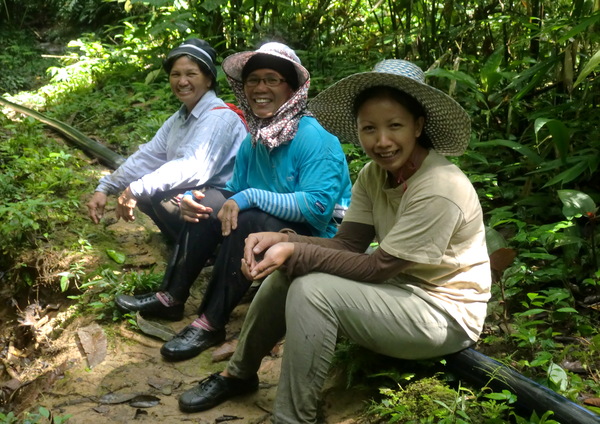
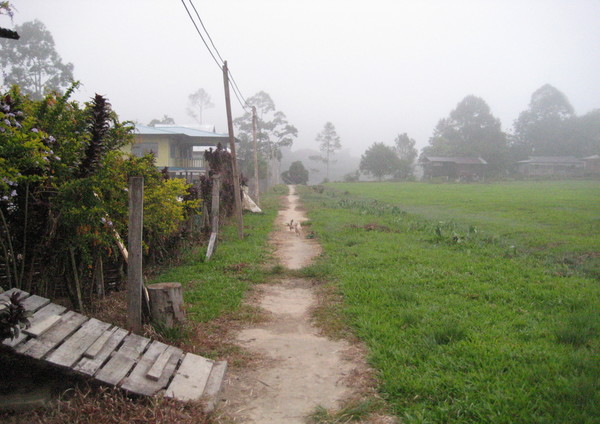
B: Where do you see your project/group evolving in the near future? What are you busy working on at the moment?
BFM: We would like to enter more fully into the social enterprise space, we have started dipping our toes into this with merchandise for sale at pop-up stalls with the proceeds going back into our funds. This started because as we were working with rural communities and in the area, we were struck by the quality of the produce and crafts (this included upcycled newspaper baskets in a specific community, Long Beluyu in Lawas and rattan basketry from a Penan village, Long Lamam in Ulu Baram) – by bringing these to market, this benefits the producing community whilst raising funds to assist another community in the future.
At the moment, we are focussing on the 3 key initiatives as mentioned in Q1.
B: How do you see Borneo crafts at the moment?
BFM: From the onset, what we call Borneo crafts in today’s world have been articles that were very much practical instruments that the locals of Borneo used in their daily life. This is clearly the case when one takes a sweeping view of what is for offer at a handicraft market. The items are similar, though not exactly identical; across the various ethnic groups because they served a practical function within the said community during an age where self-reliance was key to survival. So there is a case where, once you see one, you have seen them all.
A transition from souvenir trinkets to high-end art piece is needed but for this we need individuals who can view such crafts as art and find means to market them as high-end products.
B: How could people access your group at the moment? Is there any public participation/volunteer you allow in your project/group?
BFM: For information, people can refer to our website at http://barefootmercy.org/ and Facebook page at https://www.facebook.com/barefootmercy/. We hold benefit events in Kuching where people can attend. We have also had people come on our trips to rural Sarawak – just get in touch.
B: Could you tell us more about Kindy Project?
BFM: The Kindy Project is a project to construct a new building for a pre-school in a Penan community, Long Lamam in Ulu Baram. With the support of DNA, a Kuching-based architectural practice, we are aiming to build an aesthetically designed building with an ethos of sustainability in the form of maximum ventilation, maximum natural light, rain harvesting features and ease of maintenance. Apart from the immediate benefit for the pre-school, this can also introduce new building practices into the community where buildings suffer from excessive heat retention and where rain-harvesting is from rust-prone zinc roofs.
Find out more about #TheKindyProject below - documented by SOOL productions:
B: Please recommend stories/projects/individuals/groups that we should reach out to in order to expand the Borneo Art Collective network.
BFM: 1. Youth Shades of Art – a group of young people who provide a platform for local talents to perform their form of art, be it musical, dramatic or spoken word.
2. Wordsmith of Kuching – a group of writers who organise small events that encourage people to showcase their written works.
B: What would be your message to aspiring fellow Borneo Entrepreneur/Craftsmanship?
BFM: The key is to think big, be intentional and to find means to appeal to an international audience.
Find opportunities outside the confines of Sarawak or Borneo and actually place Borneo craftsmanship on the world map as art. This takes effort and a little luck and probably the nose for sniffing out opportunities. But the returns are great.
Take the likes of people like Ernesto from Borneoheadhunters, a tattoo artist who spends most of his time overseas promoting getting tattoos using traditional Iban tattoo methods. He is selective and intentional with who he wants to showcase his talent with and so far, it has been very successful.

